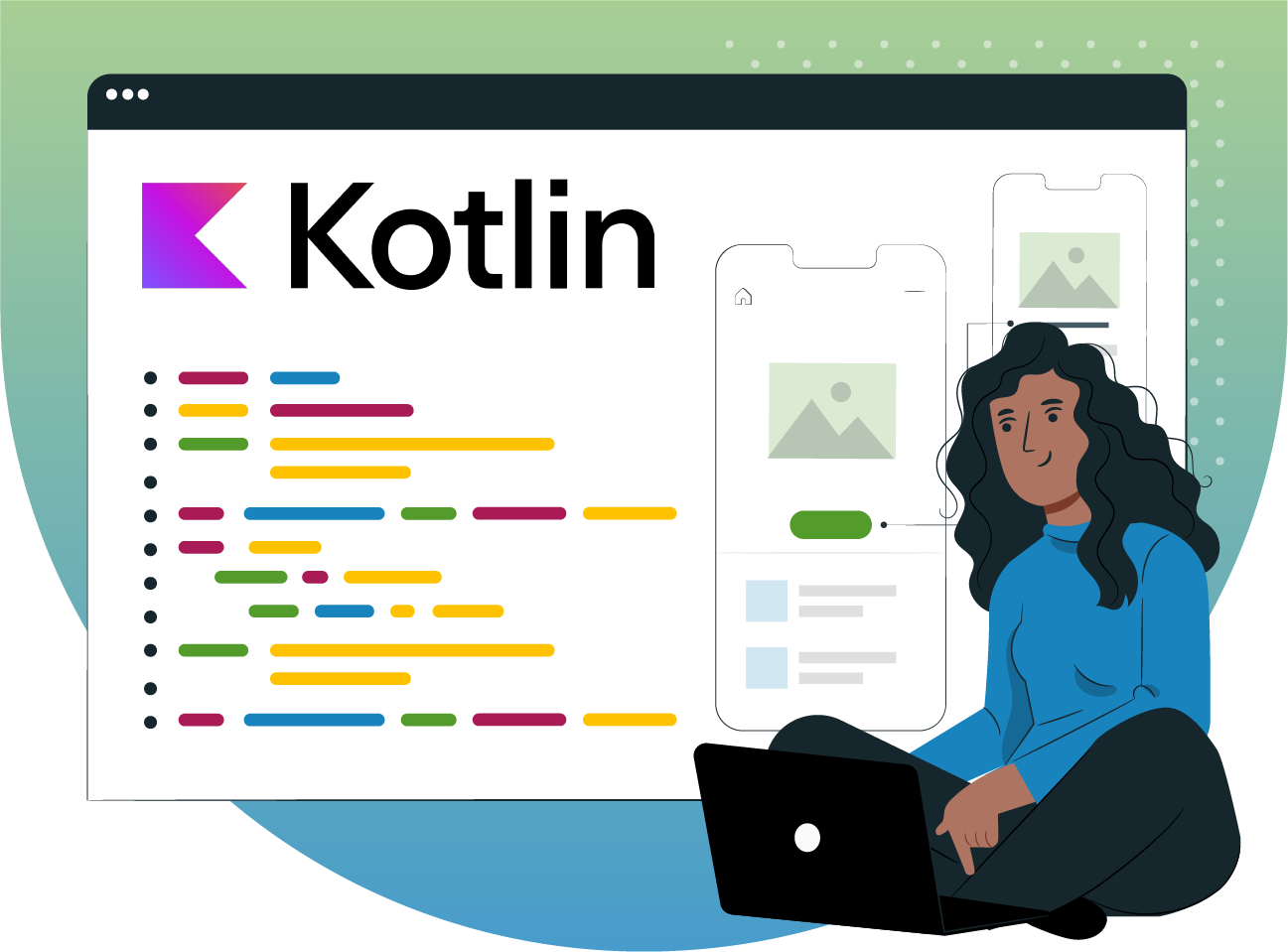


Kotlin application development services to Build Ultra-Modern, Scalable, And Secure Applications.
With Google’s approval of Kotlin as the preferred language for Android Programming, Kotlin has gained in popularity among developers and enterprises worldwide. Our continuous-learning mindset, modern development approach, and 36+ years of experience help us to develop future-ready solutions using a modern tech stack in no time. Kotlin is a versatile language and widely-used language not only for mobile but also for server-side programming, web development, data science projects, and cross-platform app development.
Build feature-reach, high-performant, cross-platform, and powerful Android apps using Kotlin, paired with secure coding practices and agile approach.
With the ability to target JavaScript on both server-side and client-side, Kotlin.js makes web development easier and faster and can be integrated with existing third-party libraries and frameworks.
Avail greater benefits of concise code, optimized performance, safety, and interoperability by migrating your Android application to Kotlin with the help from our Kotlin experts.

Kotlin is a good choice for developing server-side applications, offering scalability, interoperability, easy-to-use abstractions, and full compatibility with existing Java Stack.

Our continuous-learning mindset, modern development approach, and 36+ years of experience help us to develop future-ready solutions with Kotlin in no time.
With our decades-long experience in mobile app development, we help our clients save time, cost, and effort by developing android applications that address ever-changing business needs.
We gather all the required information and analyze your business requirements. We begin with validating your idea or suggesting a feasible solution to meet your needs. In this phase, we find optimal solutions by conducting thorough research, estimation, risk analysis, and requirement elicitations.
Our goal is to create an intuitive, flawless, and great user experience that helps our clients win the UI/UX game. We chalk out UI/UX strategy, prepare software requirement specifications, create wireframes, and build software architecture, user interface design, and prototypes. Prototypes are tested and validated with feedback at an early stage.
In this phase of SDLC, our experienced software developers transform your ideas into digital reality with the chosen languages, frameworks, technologies, and platforms. Our team builds customized solutions following best coding practices and standards. We follow the agile approach to creating continuous integration and delivery pipeline.
We rigorously test the developed system for inconsistencies, bugs, security, quality, performance, and errors. Our software testers use automated and manual tests to evaluate the functionalities, and behavior of the software under different scenarios, and check whether the software product matches expected requirements or not.
After thorough testing and performance checks, we then deploy the developed system on preferred platforms or the cloud and integrated it with necessary configurations. We make sure that you will have an environment and system that is easy to manage and scale with less downtime in a production environment. We continue monitoring the performance and fixing issues with comprehensive and continuous technical support.
Our SLA-driven support and maintenance cover fixing issues, performance consistency, and changing user requirements. Our agile approach and continuous improvement cycle help organizations add new features seamlessly to stay relevant and competitive. Our services include adaptive, corrective, preventive, and perfective software maintenance to keep up with the changing needs.
Whether you are planning to develop a new android app or migrate an existing one to Kotlin or leverage Kotlin for engaging web experience, our expert Kotlin developers help you build high-quality, secure, and scalable digital solutions.
Get in Touch
Discover the diverse range of industries we proudly support with our innovative software solutions to companies of different business verticals. Our expertise spans multiple sectors, ensuring tailored services for every unique need.
Kotlin is widely used for developing Android apps. It can be used for any kind of development, be it web, server-side, or client-side. It supports many platforms such as macOS, iOS, embedded systems, Windows, Linux, WebAssembly, JavaScript, and mainly JVM.
It is not necessary to learn Java before Kotlin but most Android code is written in Java and if you know Java, it will be easier for you to understand and learn Kotlin.
Kotlin data class is a simple class that is used to hold data in it. Some standard functionalities are automatically derivable from the data in such classes.
Lambda function is an anonymous function that can be treated as values. These lambda functions and expressions are function literals. These literals are functions that are not declared but passed immediately as an expression.
Lateinit keyword is used for late initialization. It is used to avoid null checks. Simply, it ensures that a variable won’t be null or empty and will be initialized before you use it.
It is one of the important features of Kotlin that allows developers to write asynchronous, non-blocking code. They are conceptually similar to threads but it is not bound to any particular thread. It may suspend execution in one thread and resume its execution in another one. It helps manage long-running tasks and multitasking, resulting in increased productivity.
Sealed classes are used to represent a restricted class hierarchy. It defines a set of subclasses within it. Sealed class ensures type safety by restricting the types to be checked at compile time.
You can open the Java file and go to Code > Convert Java File To Kotlin. Also, you can copy the code from the Java file and paste it into the newly created Kotlin file. Android Studio then asks you to convert your code to Kotlin.
SPEC House, Parth Complex, Near Swastik Cross Roads, Navarangpura, Ahmedabad 380009, INDIA.
This website uses cookies to ensure you get the best experience on our website. Read Spec India’s Privacy Policy